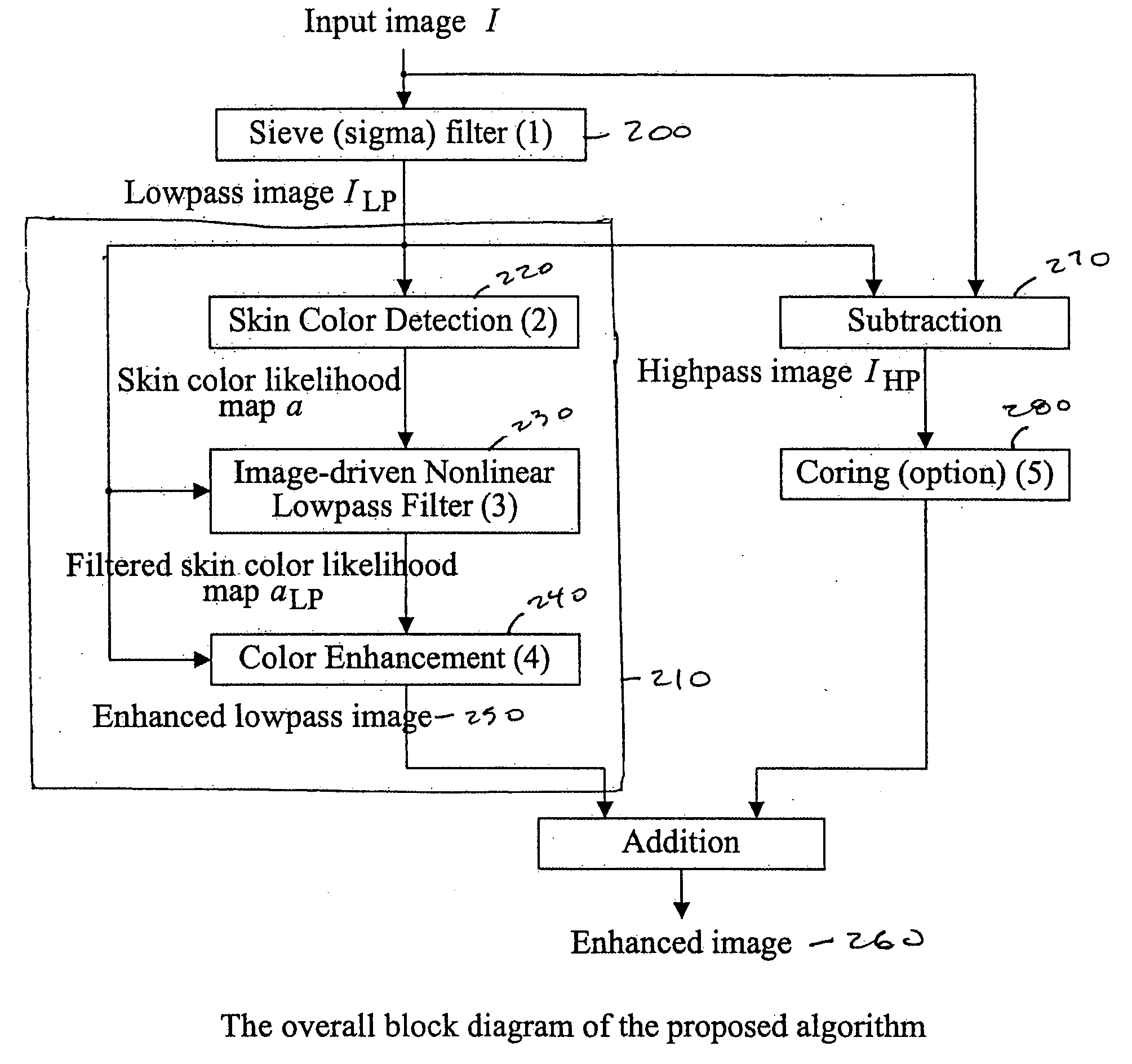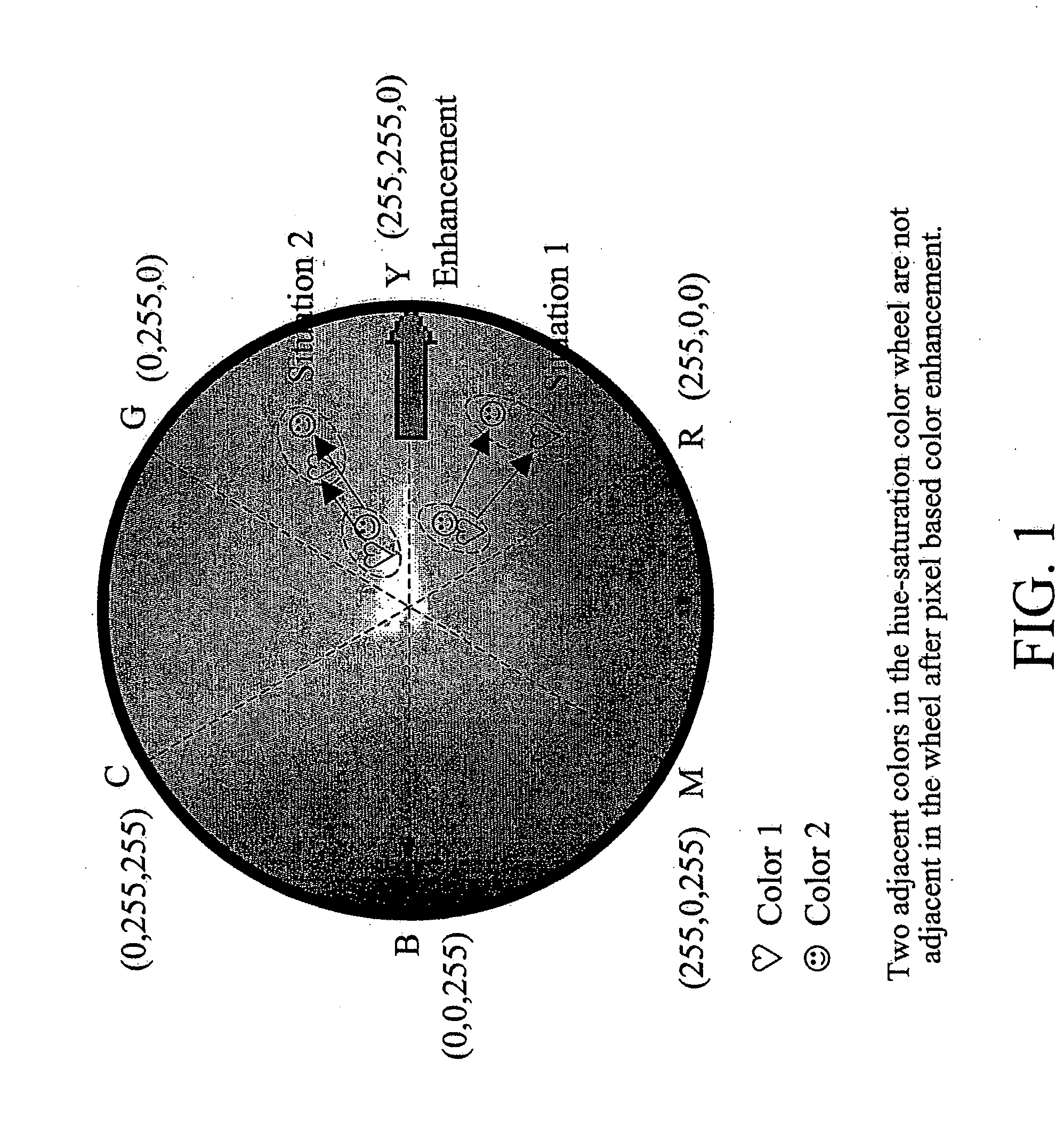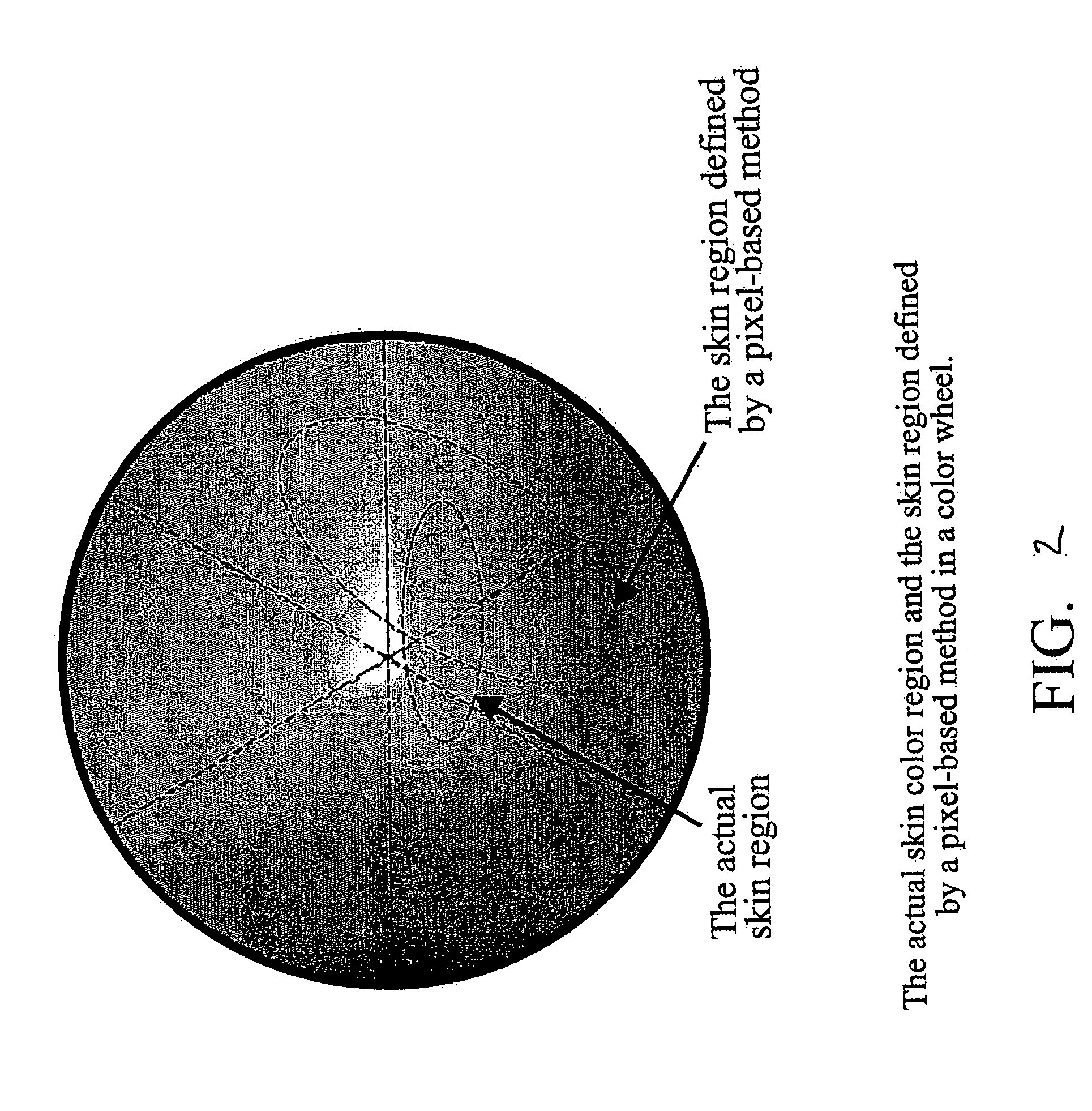Color enhancement technique using skin color detection
a color enhancement and skin color technology, applied in the field of image enhancement, can solve the problems of not being able to protect pixel-based algorithms that do not work effectively, and missing true skin colors in the skin color region, so as to achieve the effect of protecting all skin colors in the image and not being able to enhan
- Summary
- Abstract
- Description
- Claims
- Application Information
AI Technical Summary
Problems solved by technology
Method used
Image
Examples
Embodiment Construction
[0019]An observation was made that a typical pixel based color enhancement technique results in two similar colors before enhancement being modified to different values that are significantly less similar after enhancement. FIG. 1 illustrates two different situations. Situation 1 illustrates the case when two colors are similar but have different hues, and situation 2 illustrates the case when two colors have the same hue and similar saturations.
[0020]In both situations, the two colors are close to each other in the color plane before color enhancement. The two colors are spaced significantly apart from each other in the color plane after color enhancement, indicating that the two enhanced colors are less similar after enhancement than they were before enhancement.
[0021]Single pixel-based color enhancement techniques also enhance artifacts while it enhances colors. The pixels in spatial flat areas of the non-enhanced image tend to have similar colors, and the differences among the s...
PUM
 Login to View More
Login to View More Abstract
Description
Claims
Application Information
 Login to View More
Login to View More - R&D
- Intellectual Property
- Life Sciences
- Materials
- Tech Scout
- Unparalleled Data Quality
- Higher Quality Content
- 60% Fewer Hallucinations
Browse by: Latest US Patents, China's latest patents, Technical Efficacy Thesaurus, Application Domain, Technology Topic, Popular Technical Reports.
© 2025 PatSnap. All rights reserved.Legal|Privacy policy|Modern Slavery Act Transparency Statement|Sitemap|About US| Contact US: help@patsnap.com



